Bar Refrigeration Guide: Selecting the Right Cooling System
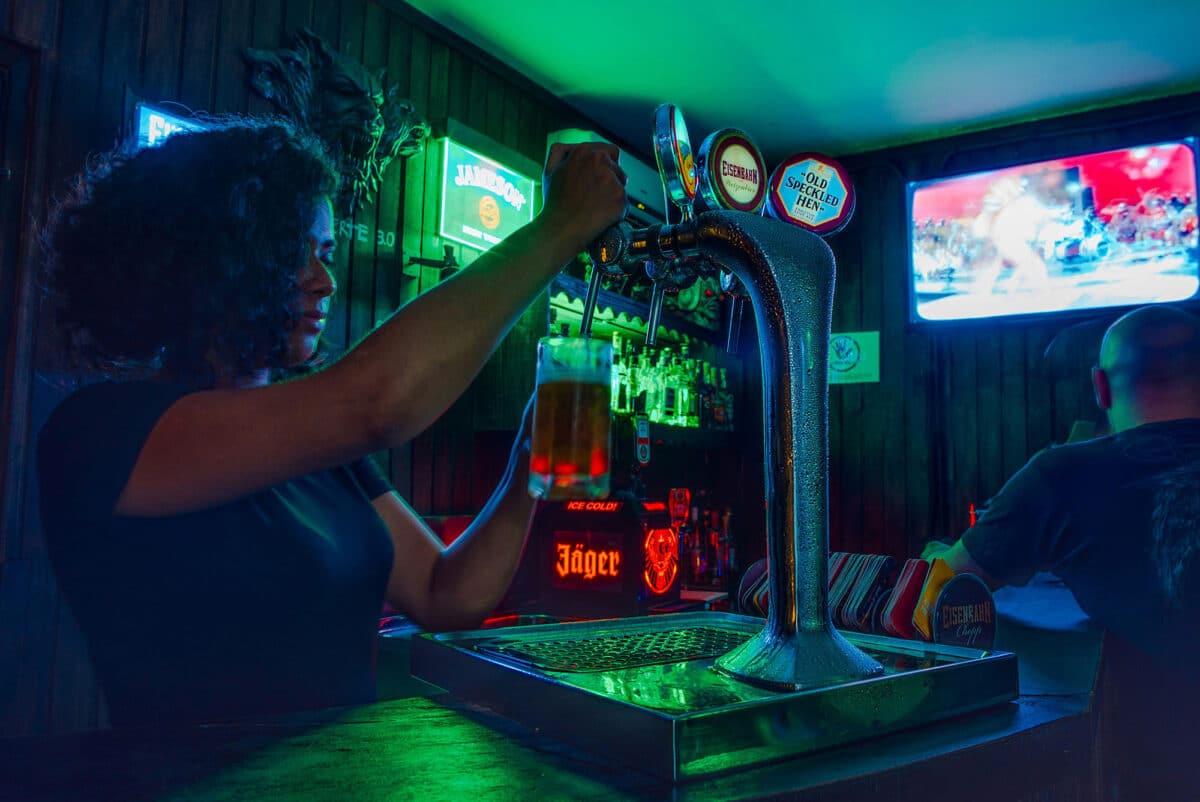
Cold beverages are the main draw of your bar. How do you store them? Keep them cold? Make the most of your bar refrigeration equipment.
In this guide, we’ll break down all you need to know to keep those drinks nice and frosty, whether it’s beer, wine, soft drinks, spirits, or juice. Here’s how to select the best cooling system for the bar at your establishment.
A Fridge Walks Into a Bar: Understanding Different Types of Bar Refrigerators
Before you decide on the appropriate refrigeration equipment for your bar, it’s important to explore the many options available. Here’s a rundown of the most common pieces of bar refrigeration equipment to chill everything from bottles of beer to mixers to high-end wine.
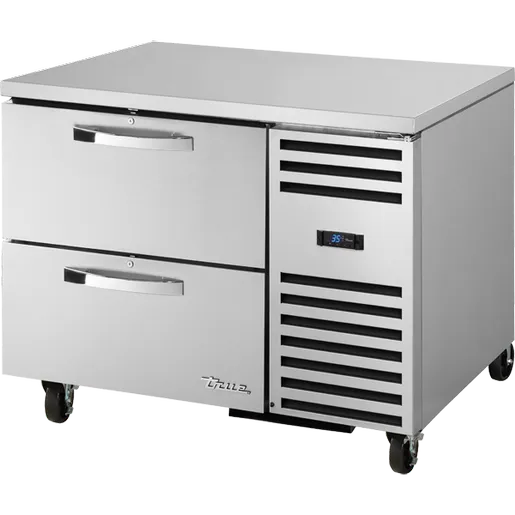
Under Counter Refrigerators
As the name implies, under-counter refrigerators fit underneath the bar’s surface. These space-saving coolers give your bartending team easy access to the chilled beverages they serve, including bottles, cans, and mixers. They may feature a solid door or glass.
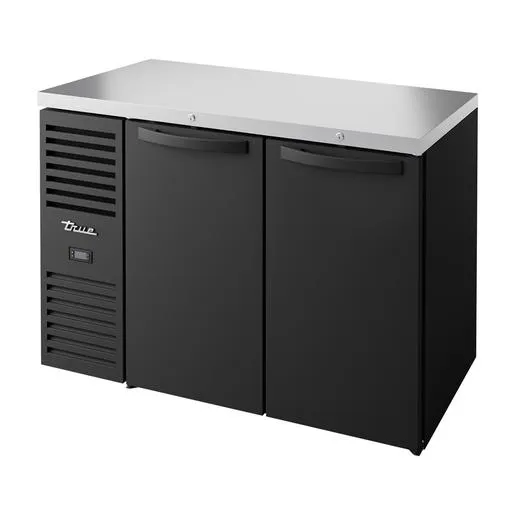
Back Bar Coolers
Bar back coolers go behind your bar, often with glass-front doors to keep the contents on display and right on hand. It’s an excellent way for customers to peruse the selection before they order. There are many size options, whether you need to store cans or bottles. Some feature a stainless steel top that serves as another surface area.
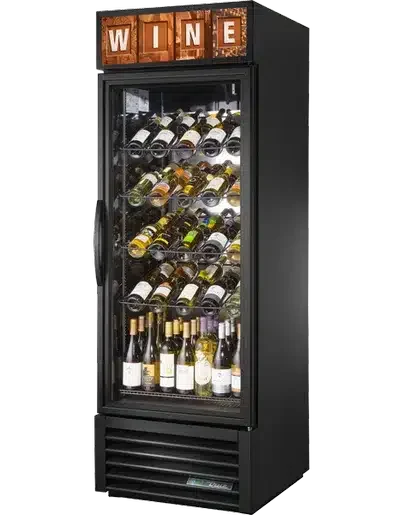
Wine Coolers
Wine cooler doesn’t just refer to those sweet summer beverages of youthful drinking. A wine cooler is designed to store bottles of wine at the ideal temperature, protecting your investment and keeping bottles in the best shape possible. Horizontal bottle coolers are a must-have for restaurants and establishments that offer chilled wines.
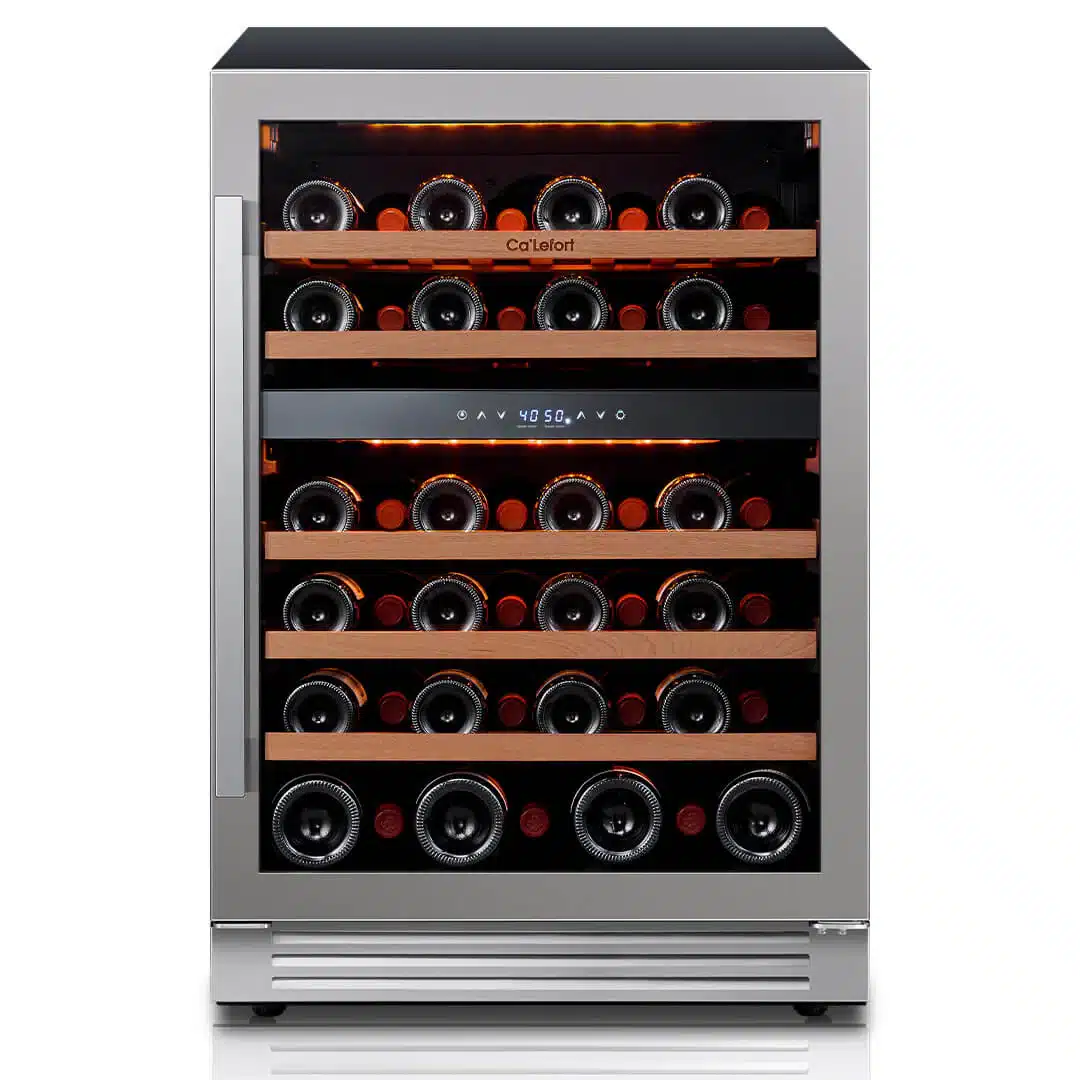
Dual-Zone Wine Coolers
The dual zone coolers often hold 19–33 bottles at a time, with multiple temperature zones. These zones allow you to keep your white and red wines at their proper serving temperature at the same time. If you have a large wine selection, you’ll likely prefer dual zone wine refrigerators to keep all the temps just right.
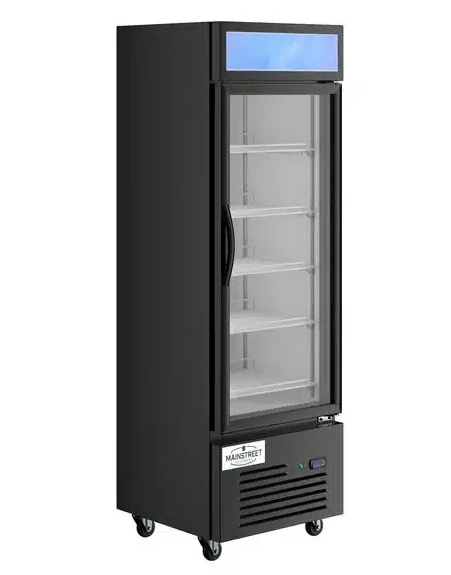
Beverage Merchandisers
Beverage merchandisers are made to display and cool all sorts of drinks in a variety of sizes—keeping them in a flattering light for customers. Typically, beverage merchandisers feature glass doors, adjustable shelves, and interior lighting. These are great for grab-and-go beverages near the bar and drinks displayed behind the bar.

Direct-Draw Beer Dispensers
The infamous commercial kegerator, or direct draw beer dispenser, is a mainstay of any place that serves beer on tap. The bar units fit under the counter, keeping kegs of draft beer nice and cool. Chilled, fresh beverages and cold draft beer flow right from the tap with a simple pull of the handle or push of the button.
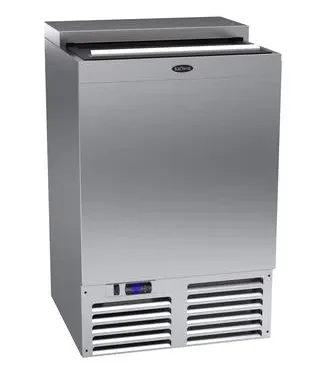
Bottle Coolers
Bottle coolers are large chest coolers with sliding or hinged lids. They’re the ideal solution to keep large quantities of drinks cold and ready to serve. Bottle coolers chill beverages quickly—whether it’s soda or beer—making sure your patrons get a refreshing, cool drink. Beer bottles chill quickly and reach the perfect temperature in a flash.
A Change of Space: Refrigeration Capacity Planning for Bars and Restaurants
How do you measure how much back bar refrigerator capacity you need at your bar? Does every bar need every type of refrigeration?
Getting the right storage balance for your bar is all about refrigeration capacity planning. It will help you run cooling efficiently, meet customer’s desires, and keep the right quantities in stock and ready to serve.
Size and Shine: Sizing Your Refrigerator Based on Volume and Business Size
You don’t need to be a math-whiz to figure out your business’s current volume needs. It starts by first analyzing your inventory. Get a good feel for the type and quantity of beverages (and any other perishable bar items) you need to store. Look at the average number of drinks sold per day, as well as the replenishment rate, to measure storage needs.
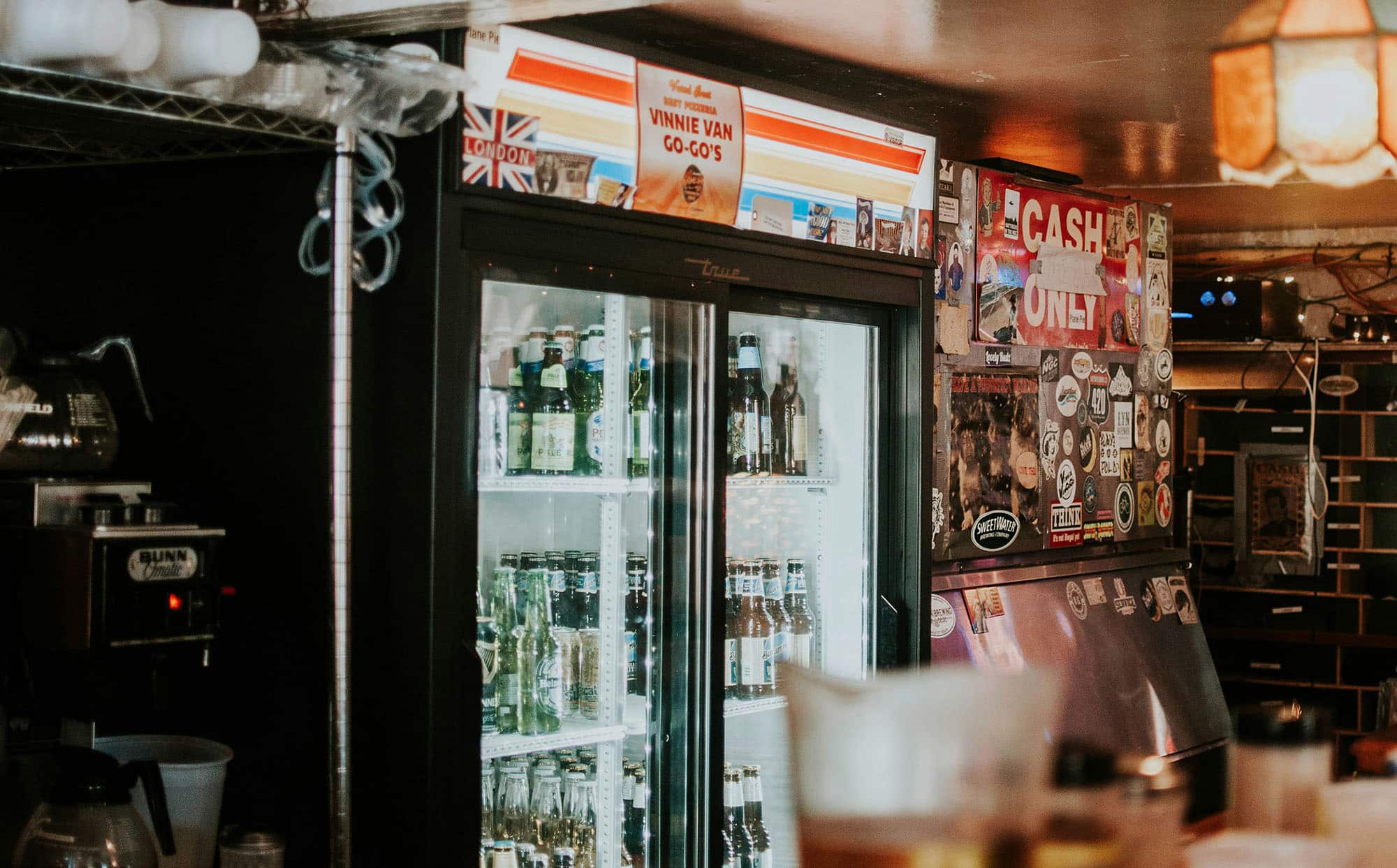
Small bars may be able to get by with a few under-counter refrigerators and some small back bar coolers. If you run a medium to large establishment with a wide variety of drinks, you may need multiple back bar coolers, large bottle coolers, beer dispensers, and more.
As you calculate your total beverage capacity, don’t forget to include a buffer for peak times like happy hours and weekends. You’ll want to maximize your capacity while ensuring your bar refrigeration units fit within the available space.
What about your bar’s future? Hopefully, with success, your bar will continue to grow, and you may need to keep that in mind as you explore your refrigeration equipment options. Estimate your expected future growth and include that increased volume and variety in your calculation.
Consider new product lines and seasonal fluctuations as well. Modular systems are a nice option for growing businesses because they can expand as needed without making significant layout changes to your bar. Look at the scalable capacity of your refrigeration units too—can they be upgraded with additional adjustable wire shelves or zones?
Your refrigeration equipment is one of the most important investments you make in your bar. Look for energy efficient units to reduce long-term utility costs. On a similar note, always invest in the highest-quality, most durable equipment you can afford. It’s one of those investments that pays for itself in the long run by helping you save on maintenance and expansion costs.
Keeping up with turnover rates can be challenging if your bar cooler capacity is too much for your inventory. Beer, juice, and other beverages are best when they’re served fresh. It’s important not to fill your stock to the maximum capacity if you won’t turn it over. Monitor your peak seasons to increase capacity during that time, then reduce the capacity to conserve energy and space during off-peak times.
Plan the right refrigeration capacity based on your current needs, future growth plans, and stock turnover rates. By taking some time to calculate the right capacity, you’ll keep your bar organized, well-stocked, and efficient.
Cooling Technology: Compressor vs. Thermoelectric
There are two leading cooling technologies to explore and understand: compressor cooling and thermoelectric cooling. You don’t need to become a refrigeration expert, but getting some cursory knowledge on the topic can help you choose the best refrigeration units for your establishment.
Compressor Cooling: A Fridge Over Troubled Water
Compressor cooling uses a compressor, condenser, expansion valve, and evaporator to maintain a consistent chilled temperature in the unit. Refrigerant (a chemical) absorbs the interior heat and releases it outside.
The biggest benefit of compressor cooling is that it helps maintain cool temperatures efficiently. It’s ideally suited for large volumes and heavy use. Compressor cooling works for beer, wine, and spirits. It can handle frequent door openings without significant temperature fluctuations (ideal for a busy bar).
The drawback of compressor cooling is that the mechanical components create a fair amount of noise as they operate. The latest coolers run smoothly and quietly, but the vibrations and sound can disturb sediment in delicate wines (and clientele with delicate hearing).
Thermoelectric Cooling: Fried Ice
Thermoelectric cooling uses an electric current to create what’s called a heat flux. This transfers the heat outside while cooling the interior. Fans work near-silently to distribute the cool air, even in noise-sensitive environments.
Thermoelectric cooling is the best solution for delicate items like fine wines. These coolers are also more environmentally friendly, because they don’t require the use of refrigerant.
The disadvantage of thermoelectric cooling is it’s less effective in high ambient temperatures. These may have a more limited temperature range and a more limited cooling capacity.
Kindred Spirits: Matching Cooling Tech with Your Bar’s Drink Menu
So, which do you choose? Thermoelectric or compressor cooling? The best way to configure your cooling tech is by matching it to your bar’s drink menu.
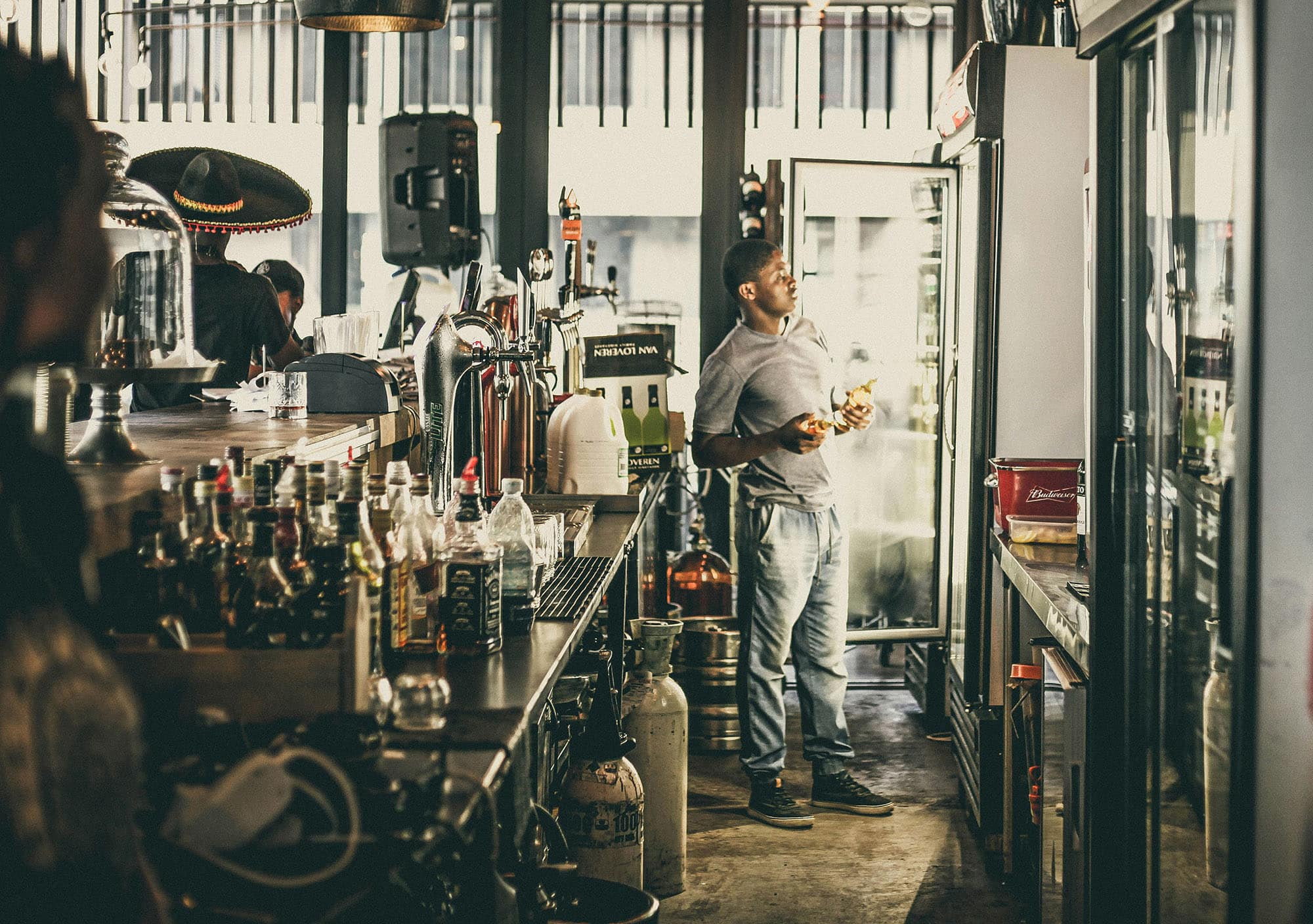
High-volume bars with a diverse menu do best with compressor cooling to maintain a consistent chill for many bottles and beverages.
Smaller bars, fine wine storage, and quiet atmospheres may prefer the thermoelectric cooling option. Some specialized wine bars opt for dual-zone wine coolers, which are ideal for storing red and white wines at optimal temperatures.
Most bars, especially those that serve wines, spirits, beer, and other beverages, find that the sweet spot is in having a combination of refrigeration units. Use a compressor unit for your general needs and choose a thermoelectric cooler to keep the most sensitive beverages ideally chilled.
A Fridge Too Far? Noise Level Considerations for Back Bar Refrigeration
How noisy are bar back refrigerators? Is it really a concern? Most back-bar refrigerators (provided they’re in optimal condition) are fairly quiet. The noise ranges between 30-55 decibels. To help you compare, an average conversation level is about 60 decibels.
While you don’t want a loud refrigerator that disrupts the ambiance, the decision really depends on your bar or restaurant. In a quiet, upscale bar, lounge, or fine dining establishment, noise from refrigeration can be noticeable and even annoying. The refrigeration noises in a busy, vibrant bar often blend into the background.
You don’t want a unit that’s so loud that customers notice, or it interferes with conversation. Fortunately, newer refrigeration units operate quietly, even those running with compressor technology. Thermoelectric coolers have a little less oomph in terms of cooling capacity, but they’re the lower-noise option.
To keep your bar refrigeration from drowning out the happy din of your customers, you’ll want to be strategic about the locations. Place refrigeration away from seating areas whenever possible. You may also want to use soundproofing materials to help dampen the noise, provided they don’t interfere with the operation of the refrigerator, making the compressor work harder (and louder).
Sound isn’t as big of a concern as it may have been with older bar refrigeration units, but it’s still an important consideration. You want your refrigeration to keep beverages cold without disrupting the customer experience.
If Looks Could Chill: Design and Aesthetics of Back Bar Fridges
Design and aesthetics are other crucial considerations when choosing a bar refrigeration unit. So many options are available today that it’s easy to find the look you want for your bar décor.

Explore customizable panels, sleek compact designs, and lighting options that complement the bar’s atmosphere and design. Look for units that complement other elements of the bar, even if the unit isn’t readily visible to customers. Should you ever need to change the layout, you’ll appreciate the thoughtfulness in blending the fridge with countertops, shelving, and lighting.
Stainless steel is one of the most popular choices for bar refrigeration. It’s durable, resists corrosion, and is easy to clean and keep hygienic. The look of stainless steel is also versatile—the sleek, minimalist look complements many different bar styles. Aluminum and coated metals are also options that can add personality and eye-catching design to your establishment.
Should you choose refrigeration units with glass doors, you get a powerful merchandising tool. Door type can be the right choice for busy bars. Bar patrons can quickly view your beverage display selection and find something that will satisfy their tastebuds. (Hello, impulse purchases!) Glass doors make it easier for your bartenders to locate and serve drinks, too. Self-closing doors help maintain cold beer temperatures.
Many beverage coolers include internal LED lighting. Not only does this lighting highlight the contents of your fridge, but it’s low heat, so compressors and other refrigeration components don’t have to work overtime to keep the environment cool. Plus, subtle LED lighting adds that all-important ambiance to your bar.
With adjustable shelving and easy-to-organize designs, you can rest assured that you’re always presenting an organized front to customers. A well-designed back bar fridge should complement your bar design while enhancing the functionality of your bar area.
Froze and Cons: Built-in vs. Freestanding Refrigerators
Should you choose built-in refrigeration or a freestanding unit? There are pros and cons for each type.
Built-in Refrigerators
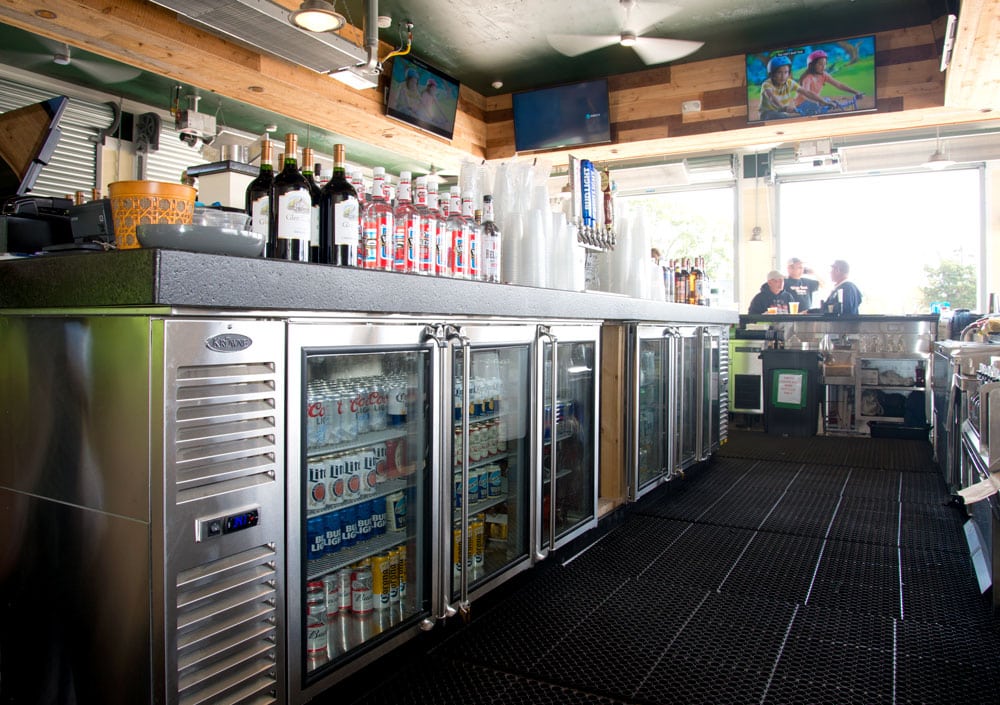
Built-in refrigeration units can be a great choice for keeping the look of a bar consistent. They require professional installation to ensure they fit perfectly and have the right ventilation system set up. Proper airflow is a must to prevent overheating and damage to the unit. Once installed, these units are often fixed-in-place pieces of underbar equipment, making them a less flexible option should you change the look or layout of your bar.
Pros:
- Seamless integration with cabinetry for a cohesive and sleek look.
- Customization options such as paneling to match the rest of the bar.
- Space efficient by fitting into the existing layout.
Cons:
- Typically higher cost for both purchase and installation.
- Built-in refrigerators are permanent—they can be difficult to move or relocate.
- Need a properly ventilated space to work efficiently.
Freestanding Refrigerators
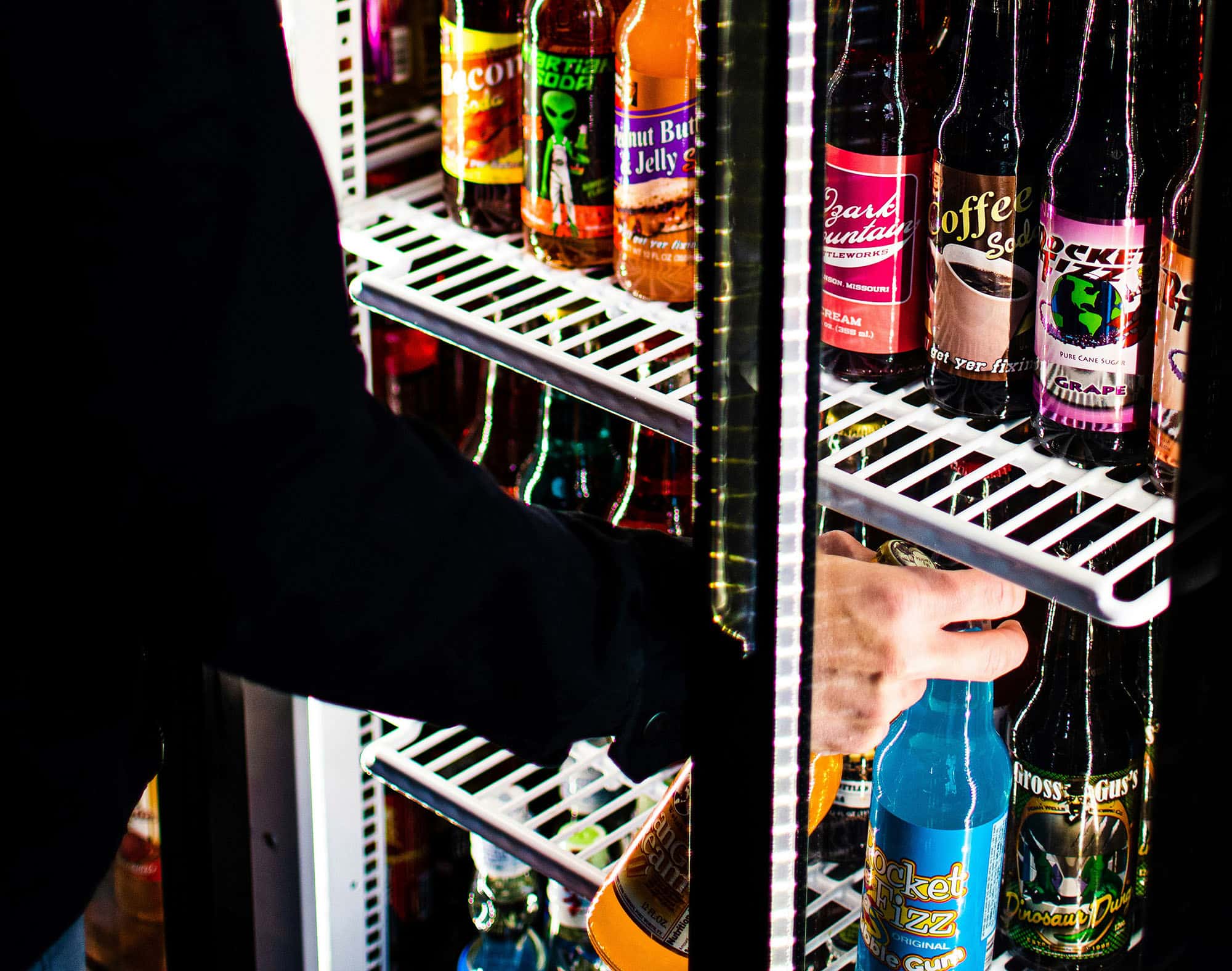
Freestanding refrigerators offer easy installation and set-up—you may even be able to do it on your own. They are also a flexible choice that you can move and reposition to accommodate changes in your layout. These units feature built-in ventilation systems, making them easier to place. They’re often the more affordable option as well.
Pros:
- Freestanding refrigerators can be moved around and placed anywhere.
- They are typically less expensive and easier to install.
- Freestanding refrigeration units are available in a wide range of styles, sizes, and capacities.
Cons:
- They may not blend as seamlessly with your cabinetry and bar design.
- They can take up more space, which can be a problem for smaller bars.
As you weigh the pros and cons between built-in and freestanding refrigeration, it’s important to consider the future growth of your business, too. If your bar changes layouts and evolves in the future, you may prefer the flexibility of free-standing refrigeration units.
Shop with ConFRIDGEnce: Additional Considerations for Bar Refrigeration
As you peruse your bar refrigeration options, it’s important to keep in mind the practicality of the units and the needs of your staff. A sleek, built-in unit may seem aesthetically appealing, but at the end of the day, functionality is crucial.
How much will the new refrigeration unit help you streamline operations? Are the units easy to organize, with adjustable shelving? Can your staff easily view and access the beverages?
It’s also crucial to explore the maintenance and cleaning requirements of bar refrigeration units. Often, and especially for restaurants, the kitchen becomes the main focus of your cleaning checklist. Bar refrigeration can get neglected, yet it’s right in view of customers. Proper cleaning and maintenance will ensure the units are efficient, sanitary, and well-maintained, helping you avoid the stress of emergency repairs.
Training staff on the requirements and proper maintenance of your refrigeration units is essential. By using the units properly, you’ll minimize wear and tear. Even simple reminders to keep the door closed, as well as standard operating procedures on stocking and inventory management, will help prolong the life of your refrigeration units.
The right storage solutions minimize your labor costs and cut back on the time your staff has to spend searching for a particular bottle or ingredient. The visibility of glass door units with internal lighting lets customers easily see the inventory and can be a powerful way to entice them to try new and exciting beverages.
The placement of the units is also a critical consideration. The units should be strategically set around the service area to help keep the good times rolling when things get busy. You want to look for units that are large enough to accommodate inventory without overstocking, which can lead to increased labor costs and eventual product loss.
Raise the Brr: Enhancing Customer Satisfaction with the Right Refrigeration Solution

How does your bar refrigeration unit boost customer satisfaction? It may seem like something that customers won’t notice or think about, but the truth is that your bar refrigeration plays a vital role in meeting your customers’ needs.
- Consistent Quality: Temperature control and reliability help keep beverages in optimal condition for taste and quality.
- Presentation and Display: Because the units are in view of customers, appealing refrigeration with glass doors and attractive lighting can show off your offerings.
- Stock Availability: Organized refrigeration can help you keep popular items in stock and readily available. With a glance, you’ll know when items are running low.
- Speed of Service: A well-organized, easy-to-access unit lets staff get drinks to customers quickly and efficiently. Bartenders can focus on interacting with customers instead of searching for drinks.
Grape Expectations: The Importance of Dual Temperature Zones for Wine Preservation
If your establishment serves wine, then proper refrigeration is a must. Wines must be stored at the right temperatures to maintain quality and flavor. A storage mistake can cost you a serious amount of money, especially if you’re selling high-end wines.
You don’t need to be a sommelier to know that red and white wines require different storage temperatures. Reds should typically be stored at 55-65°F (13-18°C). White wines are best kept at 45-50°F (7-10°C). If you serve both, a dual zone unit can help keep all bottles fresh and well-preserved.
One of the rules with wine is that temperature stability is everything. When wine is stored improperly, it may age prematurely and develop off-flavors. The preservation of quality is a top priority. Dual zone coolers protect the wine and enhance the drinking experience by keeping each bottle at the proper temperature. Many of these units allow you to adjust settings to accommodate your inventory as well—a helpful factor for those warm summer days when white wine is flying off the shelves.
Be PreBEERed: Ensuring Accurate Temperature Settings for Beer and Beverages
What about beer and other beverages? While beer may not have the same stringent temperature storage requirements as wine, there are optimal temperatures for almost any beverage. Lagers are best served colder at 35-40°F or 1.5-4°C, while ales are best at slightly warmer temperatures of 45-55°F or 7-13°C.
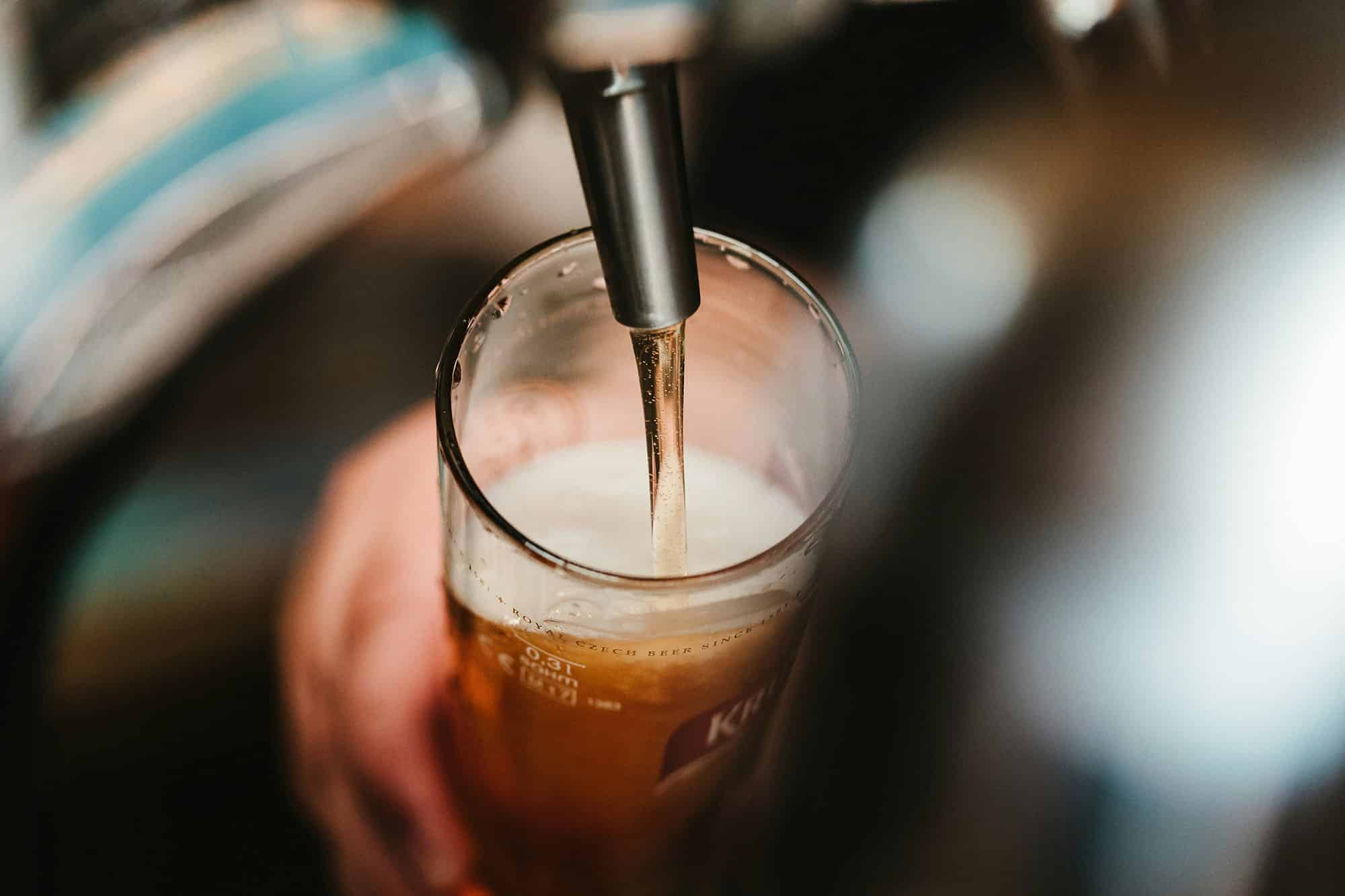
For establishments known for their beer selection, precise temperature control is a must. Drinks taste better and have the ideal carbonation when served at the optimal temperature (no one likes flat, warm beer).
Fortunately, most refrigeration units feature digital adjustable temperature controls. Bartenders can set and monitor temperatures to make sure they’re always on point. An electronic thermostat offers control over precise adjustments—often within a single degree. Some systems even allow for remote monitoring and smartphone control, making sure you can always access your system, even if you’re away.
Another benefit of the advanced temperature control technology is that it’s energy efficient, making it good for your energy bill and good for the planet. These systems require less energy to keep things cool. Some even feature adaptive cooling technology—cooling power that adjusts based on your stock and frequency of door opening.
Real-time alerts and alarms can call staff’s attention should temperatures climb outside of the ideal range. These stopgap measures help prevent spoilage and ensure any issues are addressed immediately.
Refrigeration is all about keeping foods and beverages at the optimal temperature. With today’s advanced refrigeration technology, you can take one worry off your plate.
How Much Does it Frost? Cost and Budget Planning
Almost all food and beverage establishments run on a budget. Naturally, when investing in bar refrigeration equipment, you want to make the most of the money you spend.
There are two parts to costing bar refrigeration equipment—the initial investment and the long-term savings. The upfront cost can vary widely between unit type, size, and brand. It’s important to keep your future expansion and needs in mind when you make your initial investment. You should also factor in installation costs because proper installation is crucial to the long-term operation of your refrigerator.
What about future savings? Bar refrigeration is a necessary investment (the important word here is investment). By choosing energy-efficient models, you’ll notice that the savings on electricity bills will add up over time.
Generally, higher-quality units include more warranty coverage and require less maintenance. The better the unit you invest in, the longer the lifespan, and the better the value over time. Features like advanced temperature control and better insulation help you keep temperatures consistent and quality up.
The Ice is Right: Comparing Prices Across Various Types and Brands
Prices vary between types and brands of refrigerators. Below are some starting points to help you plan. Higher-end brands offer more reliability but may come at an initially higher price point.
- Undercounter Refrigerators: Typically start from $300 to $1,500, depending on size and features.
- Commercial Back Bar Coolers: These are usually priced between $1,000 and $3,000, with premium models costing more.
- Wine Coolers: Can range from $200 for small, single-zone units to several thousand (or more) for large, dual-zone models.
- Beverage Merchandisers: Start at around $500 up to a few thousand based on size and display features.
- Direct Draw or Draft Beer Dispenser: May be $800 and $2,500, with larger units for commercial use on the higher end.
- Bottle Coolers: Range from $600 to $2,000, depending on capacity and features.
At Eleven36, we carry many top industry brands, ensuring you get the best refrigeration units possible. Brands like Hoshizaki, True Manufacturing, Maxx Cold, and Krowne are known for reliability throughout the industry.
Bar and Away: Budgeting for Future Operating Costs
Your bar refrigeration will add to your monthly utility bills. As you shop for the right unit, it’s important to budget for and factor in the additional costs. Estimate the monthly energy consumption of the unit and look for Energy Star ratings to help you make the most efficient choice.
You can decrease operating expenses by keeping up on regular refrigerator maintenance like cleaning the coils and making sure the unit is set with proper ventilation. It’s always a good idea to set aside some budget for unexpected repairs as well. High-quality units with strong warranties will help minimize the cost, but it’s prudent to have a contingency fund.
Eventually, you will also need to plan for replacement and the depreciation of your refrigeration units. Assess the expected lifespan of each unit so you can factor in the funds for future upgrades, expansions, and replacements.
Go into your commercial refrigeration purchase wisely and with a solid plan to offset future costs. By viewing your purchase as an investment, you’ll ensure that your bars needs are met now and in the future.

Don’t CompromICE: Get the Refrigeration You Need at Eleven36
At Eleven36, we carry the most reliable top brands in the culinary industry. It’s important to purchase the right commercial bar refrigeration equipment from a trustworthy source. Even small damages and product inconsistencies can increase your refrigeration’s operating and maintenance costs down the road. We have a wide selection of bar coolers along with our range of restaurant equipment.
Your choice of bar refrigeration units will be unique to your situation and operation. It’s not a matter of one-size fits all. Explore all the factors and do your due diligence to make sure you purchase wisely.
Cold beverages keep customers happy and bring them back in for regular visits. Customers will always remember the spot where they had a warm drink or where the tap lines tasted “off.” Running a bar, even within a restaurant, requires attention to detail and a commitment to quality.If you want to meet the needs of your patrons, explore all our products at Eleven36. We have everything you need to make your culinary operations a thriving success.
